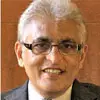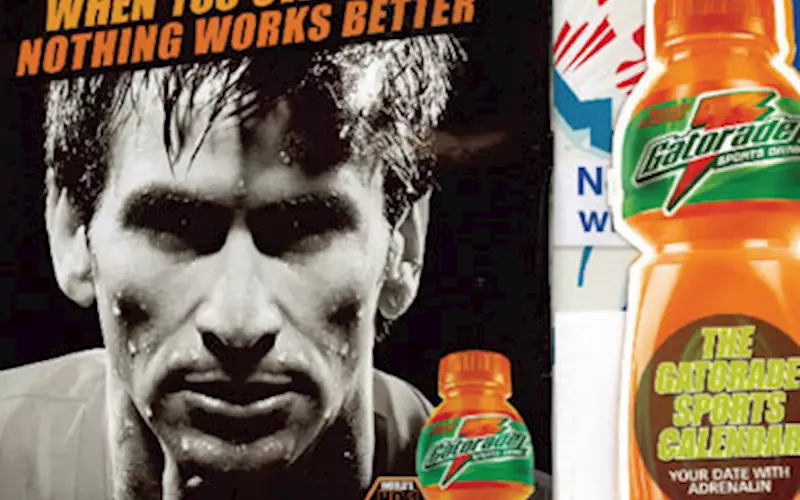A country where print still reigns...
Digital adds another dimension, but the earning and revenue share which print advertisements still command, confirms that the future of traditional print is also bright, as Ramu Ramanathan finds out
18 Sep 2011 | By Samir Lukka
This is what Worldwide Media is attempting with the launch of BBC GoodFood magazine on 21 Octobe1r. Tarun Rai, CEO of Worldwide says: "The BBC GoodFood will redefine food in the Indian imagination this October."
Innovations
Last year, advertising in newspapers accounted for 96% of print advertising, with magazines making up the remaining. It’s one reason newspapers have been very aggressive and forging innovative campaigns.
Volkswagen continues its innovation-drive. On 29 August, Volkswagen launched the all-new Jetta with a front-page lenticular: 30-lakh copies were created and rendered for special editions of The Times of India (Bombay, Pune, Delhi and Bengaluru Times) and The Hindu, Chennai city edition.
Innovation isn’t the prerogative of English newspapers which accounts for 9% readership in India but 50% of the advertising share, according to estimates from PWC. DB Corp’s Gujarati daily, Divya Bhaskar produced a 3-D newspaper. Divya Bhaskar’s edition on the festival of Holi welcomed readers with the smell of roses in the morning.
Creativity
Santosh Padhi, co-founder and CCO of Taproot, says: "Newspapers and magazines are open for more innovative and edgy stuff compared to what they were five years ago. The interactiveness has increased and magazines have been doing more as compared to newspaper since the time-lines and the production process has improved." Padhi points out how Garnier along with The Times of India recycled green paper as "a smart initiative."
Rajnish Rawat, COO of Paprika Media adds: "Time Out clients have been trusting us to come up with new ideas for their brands. We did an innovation for Gatorade in which a dummy bottle of Gatorade opens up in five bottles talking about different sports schedules. This is a perfect example of integration as a brand could communicate the fact that it is a world number one sports drink and the discerning Time Out reader got a sports calendar. We published a Smirnoff nightlife exchange program booklet in which we listed 50 best night clubs in Mumbai, Delhi and Bengaluru. Similarly we created a guide of 50 great places to eat and drink in three cities along with Citibank."
Major movers
New magazine launches continued. A year after the very high profile launch of Lonely Planet magazine, Condé Nast decided to launch Traveller, though with only six issues in a year. Fortune launched too.
Says Tarun Rai, the CEO of Worldwide Media: "Ad-ex share continues to be 3% for magazines. Magazines deserve attention from advertisers and media planners." He adds: "The good news is that new spaces beyond the women and fashion genre are being explored."
This year, Worldwide Media launched Femina Tamil on the same principle as its Filmfare Hindi. Rai adds: "Regional language versions are catching on." Overdrive has launched their Hindi edition.
Rai adds: "IRS figures did throw up some positive surprises for a change. Some magazines showed an increase in numbers. Top Gear showed an increase through three consecutive quarters with the last quarter showing a growth of 20%. Hello had a stupendous 60% growth in the last quarter."
Top spenders
Jacob Mathew, executive editor and publisher at Malayala Manorama, says: "In India, print is growing in circulation as well as advertising revenue. This will continue as our penetration levels are low compared to advanced economies."
With the festival season round the corner, Marathi publishing group Lokmat Media which produces weekly supplements like Sakhi, Oxygen, Lokrang, For You and Campus, is gearing up for special Dipawali issues for masses and premium segments.
Jwalant Swaroop, the COO, Publishing at Lokmat Media, says: "Education and automobile have been driving newspaper spend. I wish the party can continue."
The buoyancy in the automobile segment was evident in Autocar India’s twelfth anniversary issue. A bumper 500 pages issue plus four in-built supplements, and a dvd which showcased 12 super cars.
Top advertisers were: Hindustan Lever, State Bank of India, L’Oreal, Pantaloons Retail, Maruti Suzuki, Titan Industries, Himalaya Drug Company, Johnson & Johnson, Ponds India and Lakme Lever.
Measurement
Indian language papers have boosted the print media business from Rs 9,000-crore in 2004 to Rs 18,000-crore in 2010. This includes advertising and circulation revenues.
According to media-watcher, Vanita Kohli-Khandekar of the Business Standard: "The Indian newspaper industry makes Rs 12,000-crore ($2.5 billion) in ad revenues for reaching 345 million readers, compared to $26 billion (Rs 1,20,000-crore) that the US industry does for 150 million readers."
DB Corp, publishers of Dainik Bhaskar, Divya Bhaskar and DNA registered a growth of 21%. Interestingly, enough: the ad revenue growth for the group’s 62 editions in four languages is being seen in states like Gujarat, Punjab, Madhya Pradesh and Rajasthan.
This bullishness can be seen among other language newspaper groups such as Jagran Prakashan, Eenadu, Lokmat, Sakal and HT Media (Hindustan). Kohli says: Small-towns have become the centre of the India growth story and any media that serves this market – read: language newspapers – is critical for advertisers."
What experts have to say about newspapers, magazines and digital growth

Jwalant Swaroop, COO, publishing, Lokmat
The future for a regional newspaper is bright. Hyper-local content will differentiate regional newspapers from others. Plus, literacy growth in small cities will drive newspaper consumption. The small city syndrome is transforming into competitive markets and empowered consumers; and it has a long way to go.

Tarun Rai, CEO, Worldwide Media
Many magazine titles are developing properties on-ground. Magazines build communities and the interaction with communities is not limited to the printed word. Besides the Filmfare Awards we’ve built properties like the Hello Hall of Fame Awards and the Hello Derby. We’ve created the Filmfare nominations night around the awards. And Femina Fairs holds exhibitions around the country.

Rajnish Rawat, COO, Paprika Media
The magazine industry will show a growth of 4.8-5% in the next five years. However, niche magazines are doing well. In India, the industry will have to be contend with rising demand for the digital experience. Publishers will provide magazine content on digital format. The digital experience goes beyond good content and provides it on device of choice as well as on demand.

Indrajit Gupta, editor, Forbes India
After more than two years since the launch of the Indian edition of Forbes, I can say many of the fears expressed before our launch have proven to be unfounded. Our market entry proves the point that if you put premium content at the heart of the business—and support it with a distinctive marketing mix, it is possible to create new, uncontested spaces even in a cluttered, seemingly fatigued market.

Jacob Mathew, executive editor and publisher, Malayala Manorama
Newspaper is a rich medium that offers huge penetration compared to other publications. Again, newspapers are used primarily for tactical advertising. Magazines are more in the niche category and the clients depend on magazines for thematic and brand campaigns.

Lutz Kothe, head of marketing & PR, Volkswagen
We started with a very innovative marketing idea: the front-page road block on the Times of India. That morning everybody was talking about Volkswagen. It was not advertising. It was a commitment to the country. And unlike what perception is, Volkswagen is prudent about its ad spend. We doesn’t over-spend. We ensure we’ve a perfectly right strategy.

Santosh Padhi, co-founder, Taproot
Mobile phones are an important part of a consumers’ life. Newspapers in Europe are using this opportunity to bring alive the traditional print medium with the support of mobile phones as this device is available 24x7 with the consumers. It’ll take time for India to move into this form of communication, but the QR code has opened the innings.

Ashish Bagga, CEO, Living Media
The key trends in the magazine space have been client activations and 360-degree engagements including digital. Plus there has been the emergence of strong niche and special interest communities that are being served by appropriate content targeted at a selective set of advertisers.

Prasanth Kumar, managing partner GroupM Trading (CTG) – South Asia
I speak for all mediums: We require a unified platform where all media consumptions are captured and therefore it allows to look at SOI (share of impressions) rather than SOV (share of voice) which is single medium restricted. This would allow us for real practice of integrated medium approach.

Roy De Souza, CEO & co-founder, Zedo
There is a discernible change among Indian newspaper and magazine publishers for solutions related to ad serving for online ads, media advertising and digital advertising. Today, Zedo has 75% inventory available on the websites of major publications in India. Internet advertising in India stands at $300 million. This will go up to $1 billion in 2015.
Click here to read more about Ipex South Asia 2011














 See All
See All